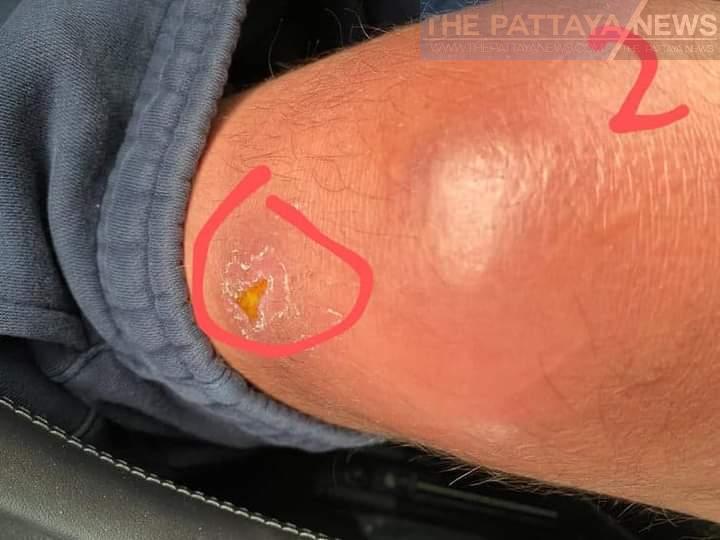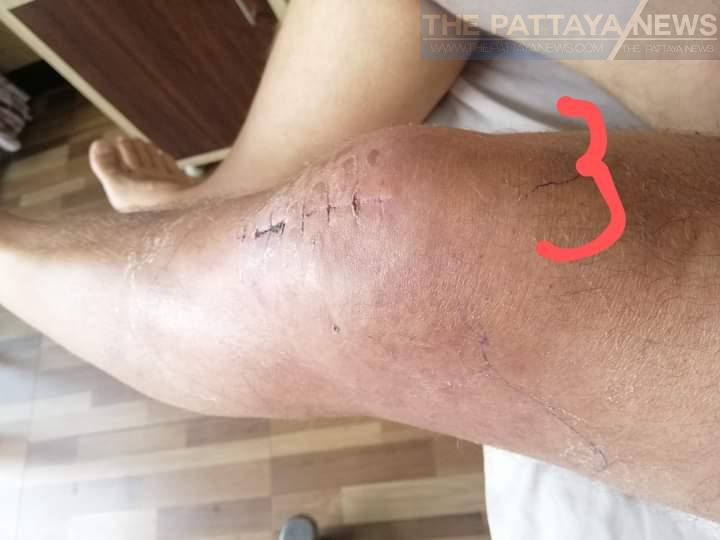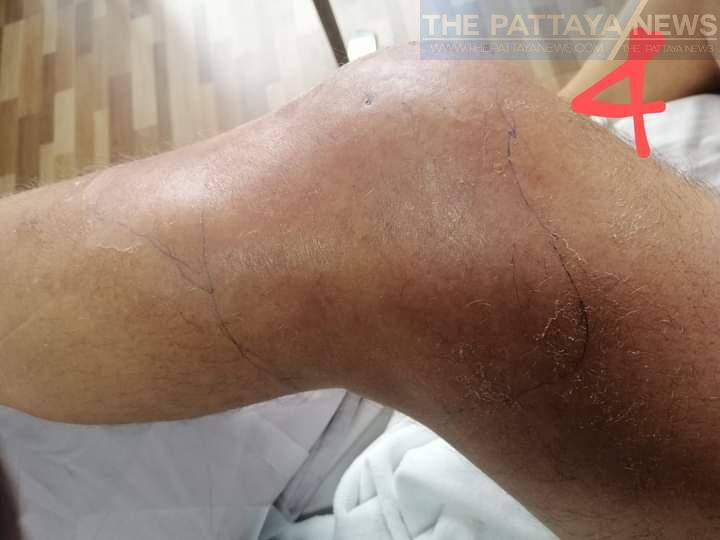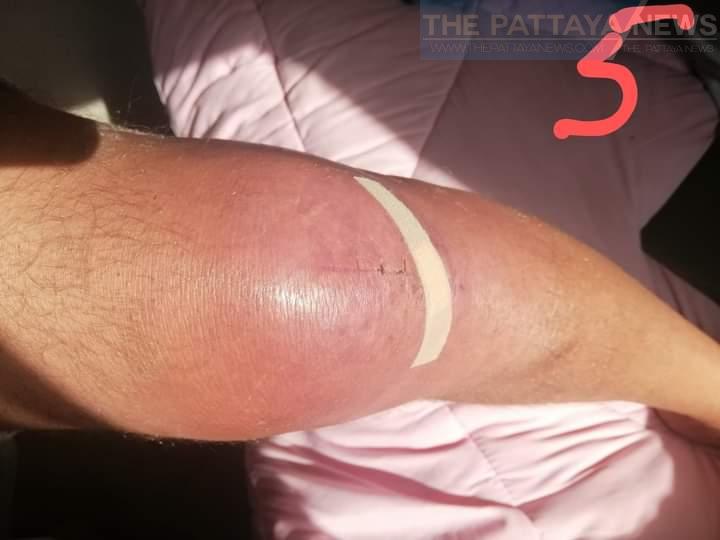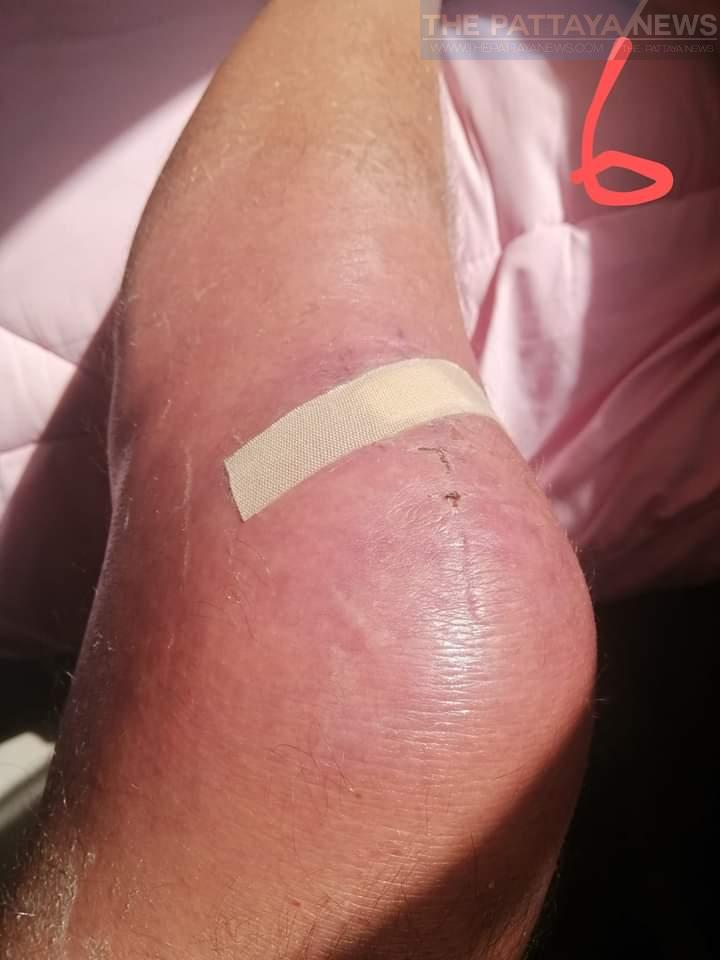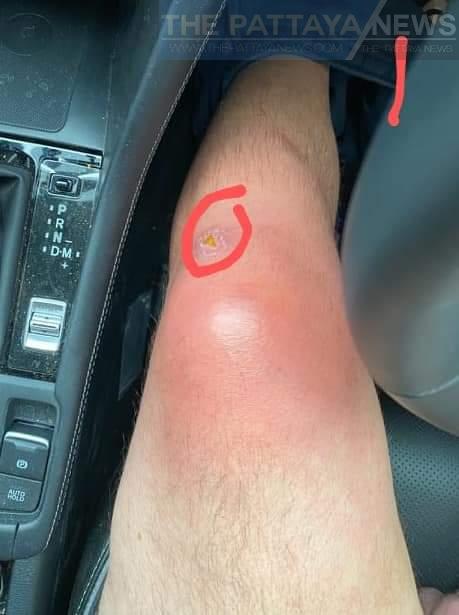Medical Bytes, Thailand No 84; “Beware the dirty wound” by Doc Martyn from Buriram Club Medical. All pictures at bottom of article.
- During a recent visit to Thailand, Bryan, an American paramedic stationed in Alaska, tripped on an uneven pavement, and fell, causing an abrasion just below his left knee. He described the wound as dirty; it was difficult to clean and slow to heal.
- Two weeks later, his knee became infected. He sent me photographs and asked for my opinion; see photo 1 and photo 2. The pictures show an abscess over his patella, knee cap, and extensive swelling to his knee. The original abrasion can be seen below and to the left of his knee.
- I directed him to the public hospital to determine if the infection extended into his knee. It did not. He was admitted for intravenous antibiotics and surgical decompression.
- Bryan came to see me after discharge. Ostensibly, he fell into a muddy pool on the road side. I warned him about dirty wounds and the risk of a Pseudomonas infection.
Pseudomonas Aeruginosa is a bacterial opportunistic infection that is difficult to treat. It is a multi-drug resistant bacteria like the highly dangerous MRSA (Methicillin Resistant Staphylococcus Aureus) infection, commonly known as Golden Staph, which plagues hospitals.
- Natural bioremediation to ‘clean up’ oil spills is a slow process. The bacteria of choice for this remediation is Pseudomonas. Indeed in 1980, by combining the DNA of four different Pseudomonas bacteria, the USA produced the ‘superbug’ Pseudomonas Putida. So, the petroleum industry and our governments have produced a super bug to help clean up the enormous burden of oil spills. But the introduction of this superbug into the environment places humans at risk.
- Two weeks later, Bryan’s infection returned. I drove him to the Buriram Public Hospital where he was seen by a Thai, female orthopaedic surgeon in training. We discussed his management. Her treatment of Bryan was excellent. Before she admitted him for further intravenous antibiotic therapy, I borrowed her biro and circumscribed the margins of the inflammation around his knee. This is a simple but definitive way of assessing the progression of his illness, as the area of inflammation either shrinks away from the line or progresses past same, see photos 3 and 4 taken the day after admission.
Bryan was treated with the same intravenous antibiotics which he was given during his first admission. He was discharged after 4 days on Cefixime, an antibiotic from the cephalosporin group, an appropriate choice.
- Two days later Bryan’s knee remained swollen and painful see photos 5 and 6. This lack of progress and the increase in inflammation indicated that there was another underlying infection. In addition to the bacteria that infected his knee, he had also contracted Pseudomonas Aeruginosa. I prescribed Ciprofloxacin, a Quinolone antibiotic. I advised him that because of the resistance of this bacterium and its indolent nature, the treatment would be protracted. He remained on Ciprofloxacin for 2 months. His wound is now healed and he is fully mobile.
- Pseudomonas is a troublesome opportunistic infection which piggy backed on the other bacteria injected into Bryan’s skin during his fall. “Beware the dirty wound.”
